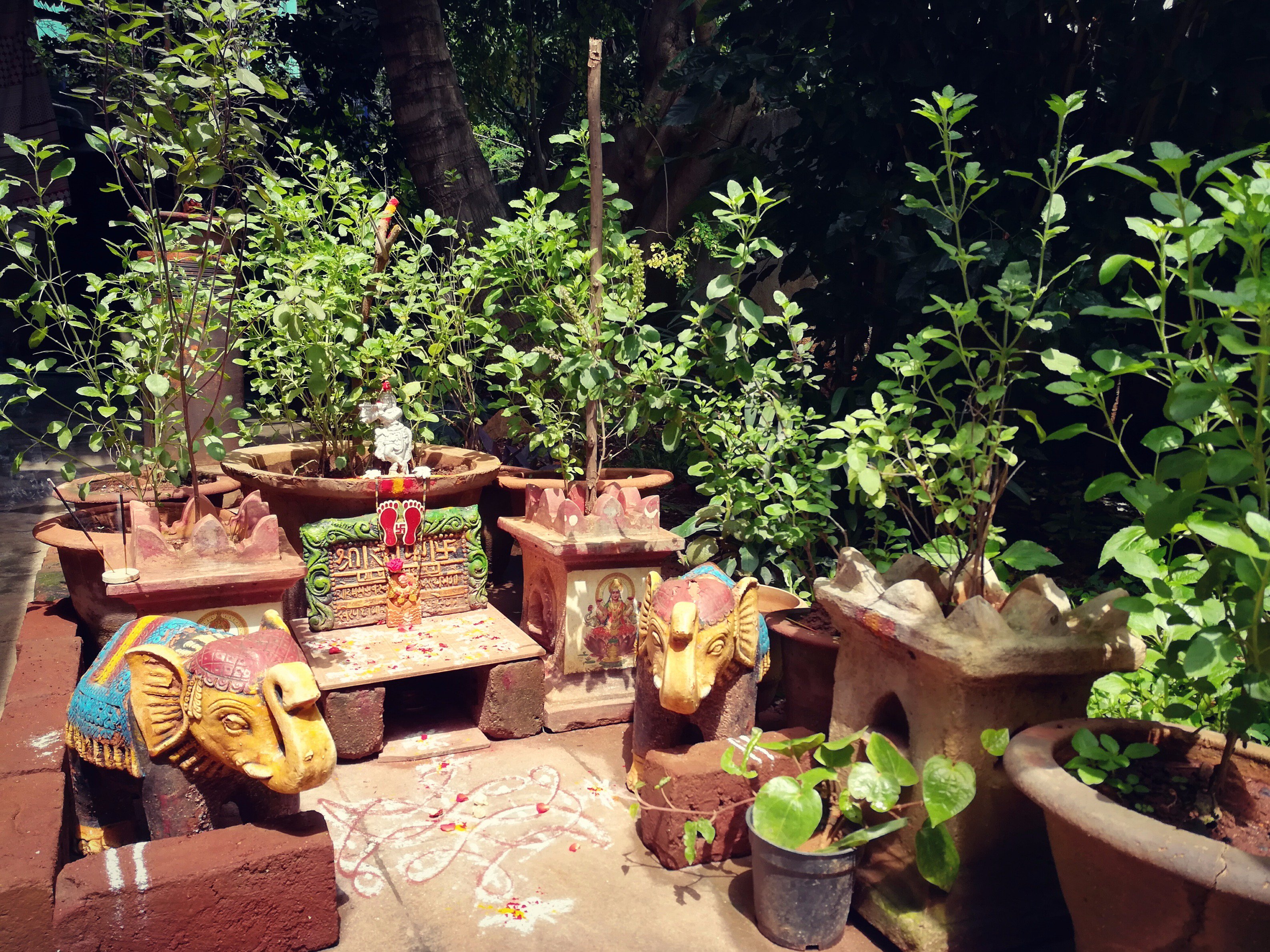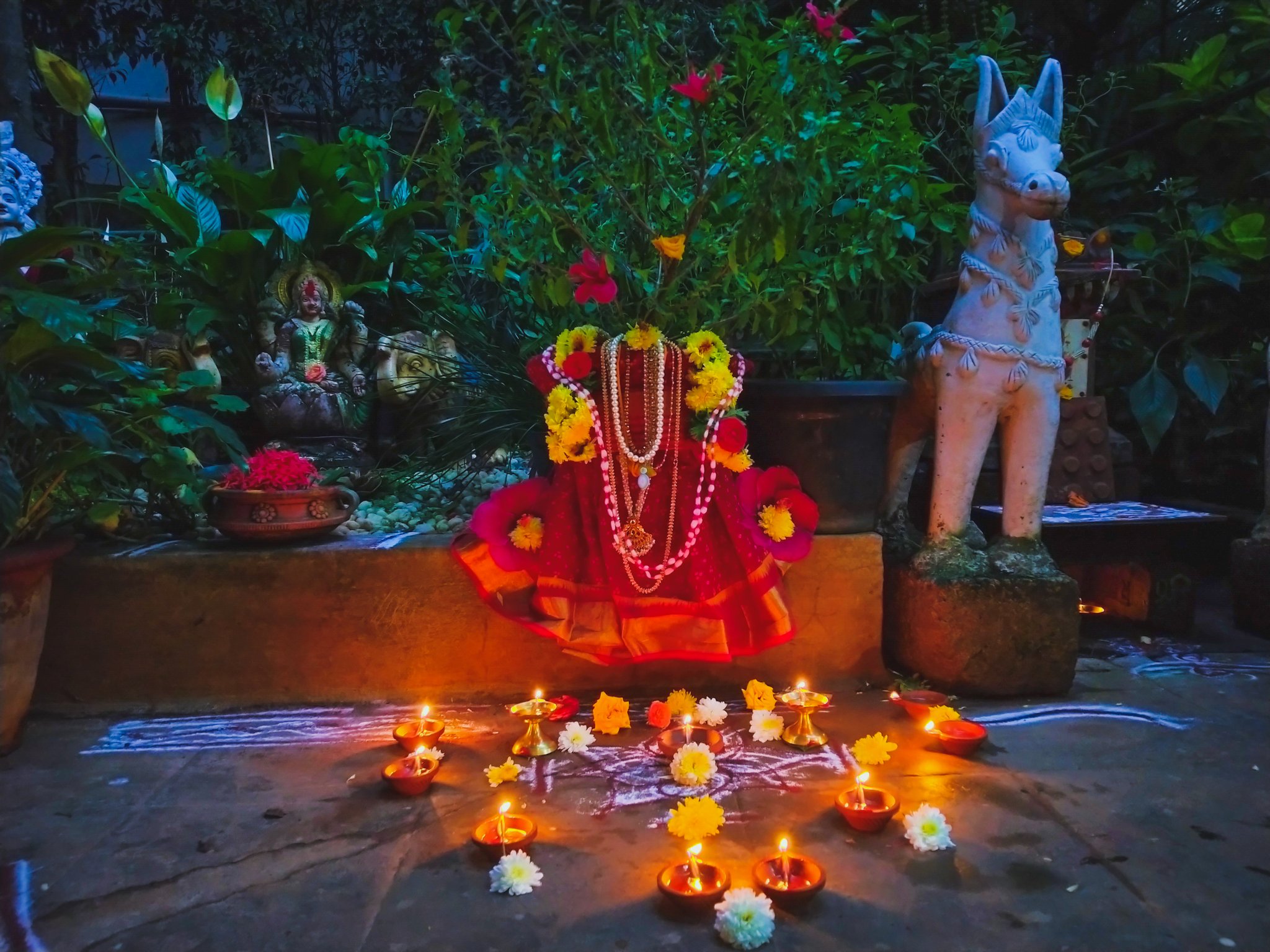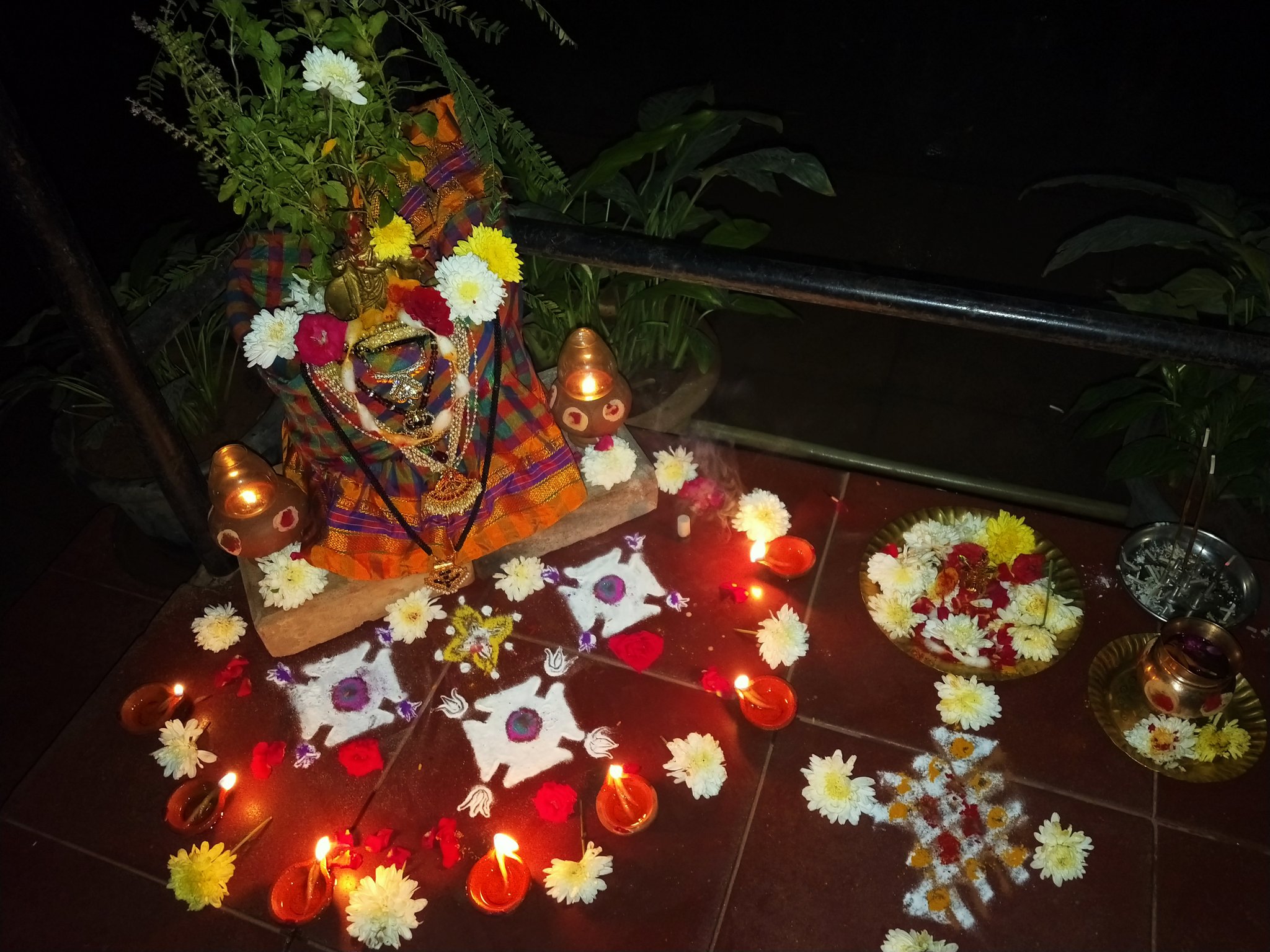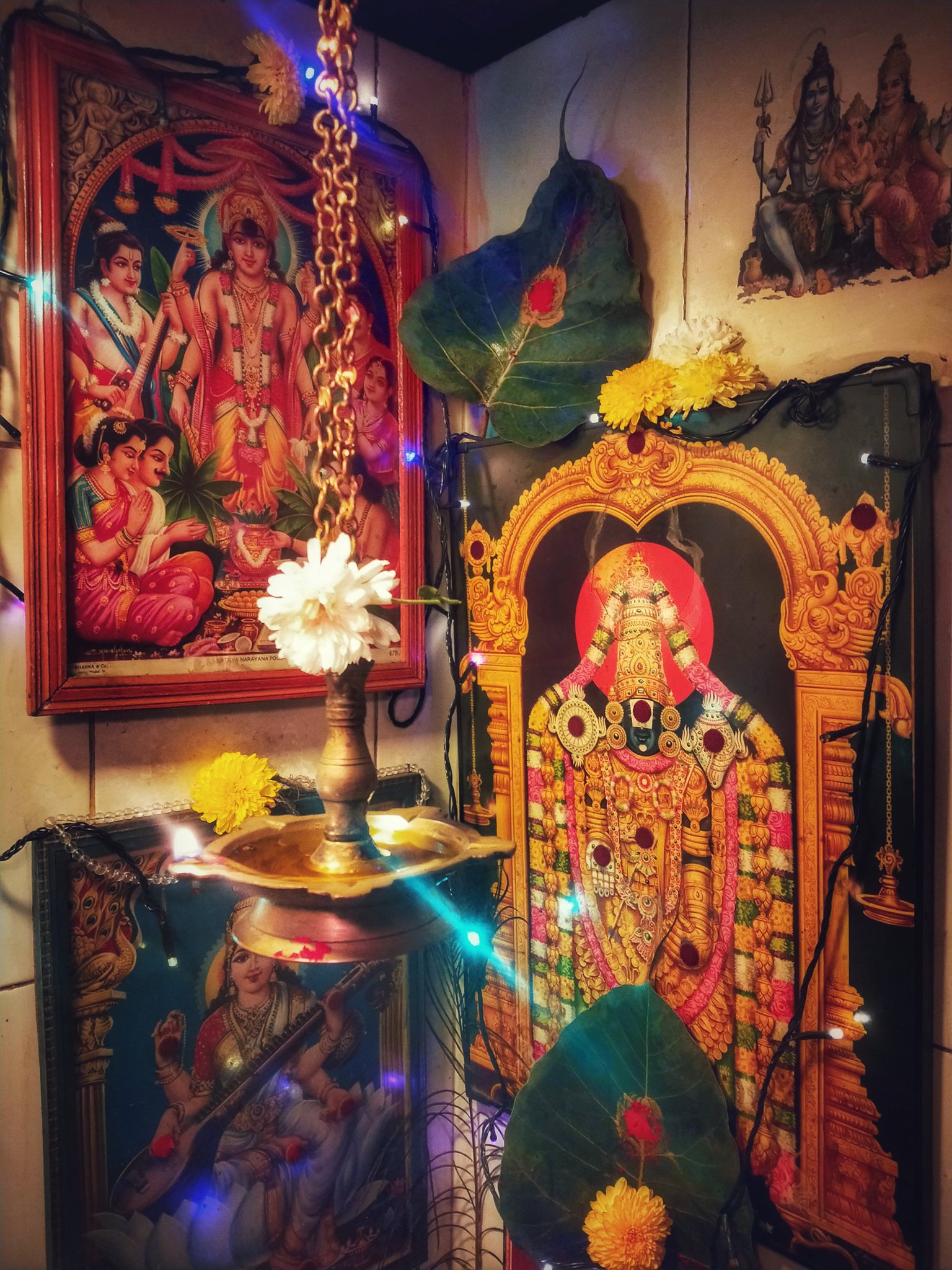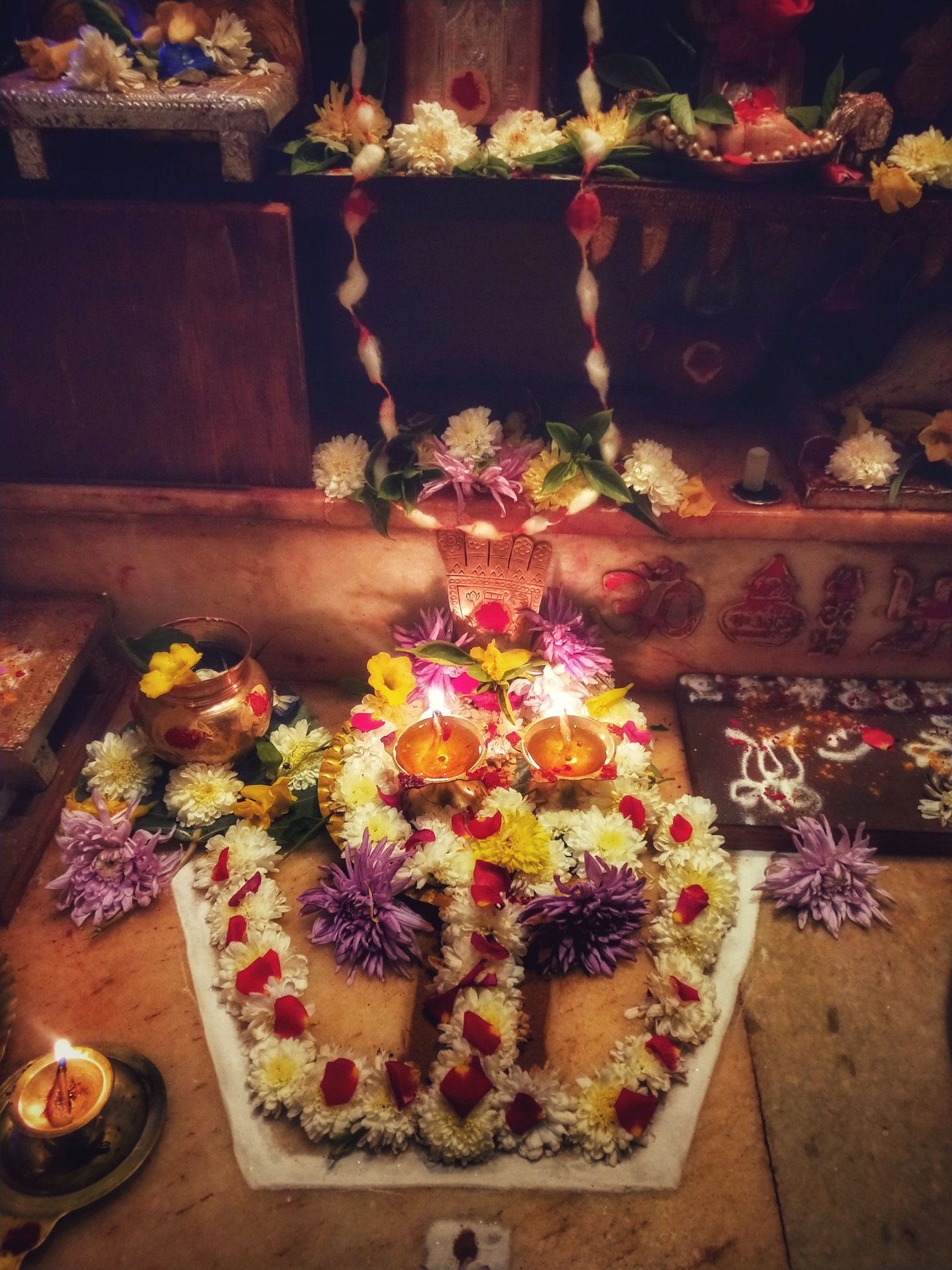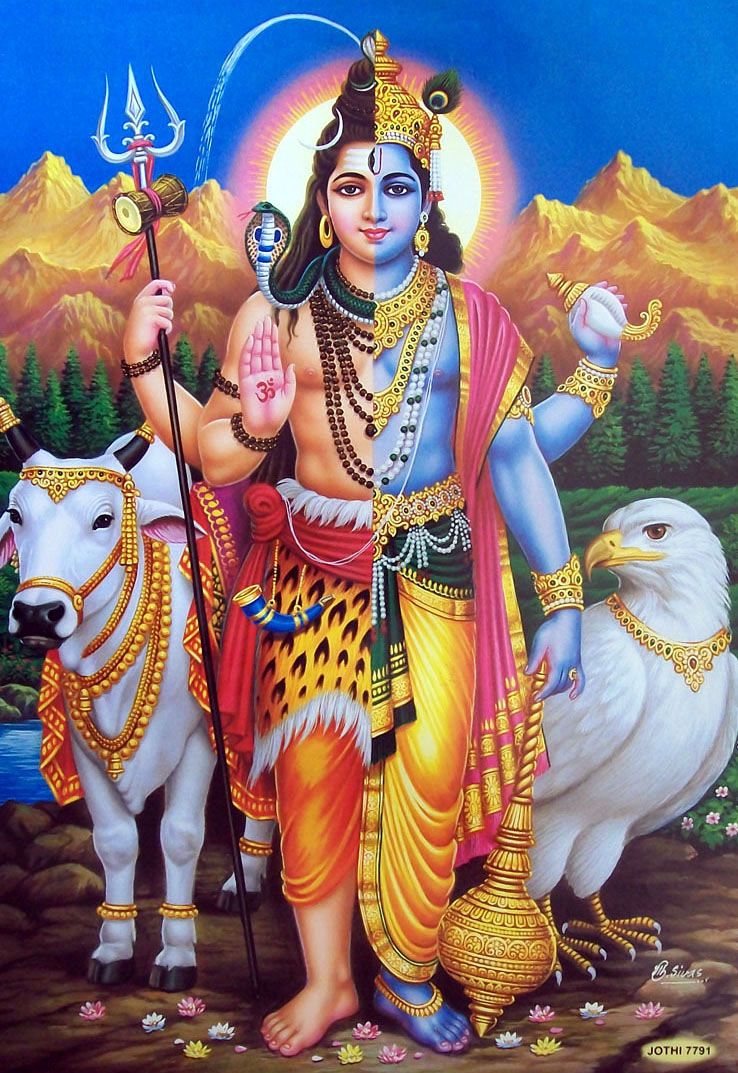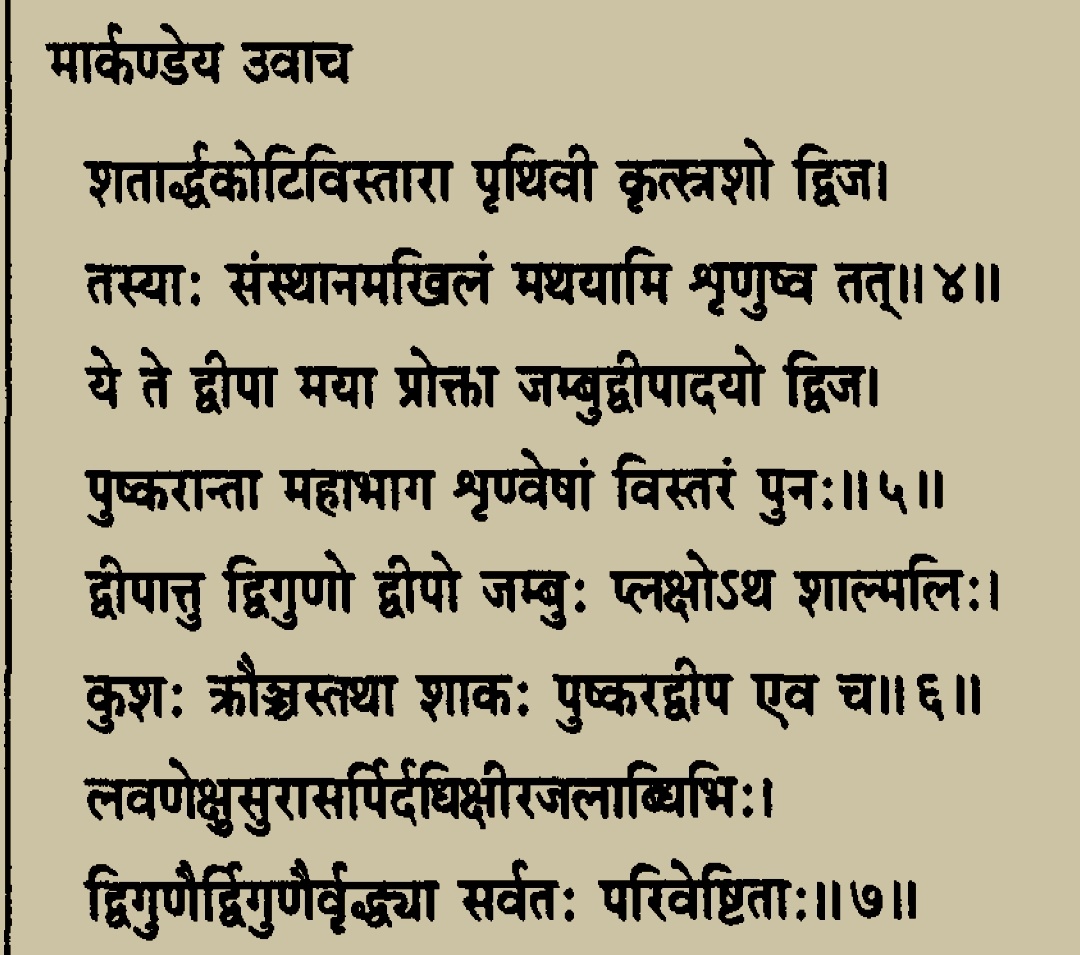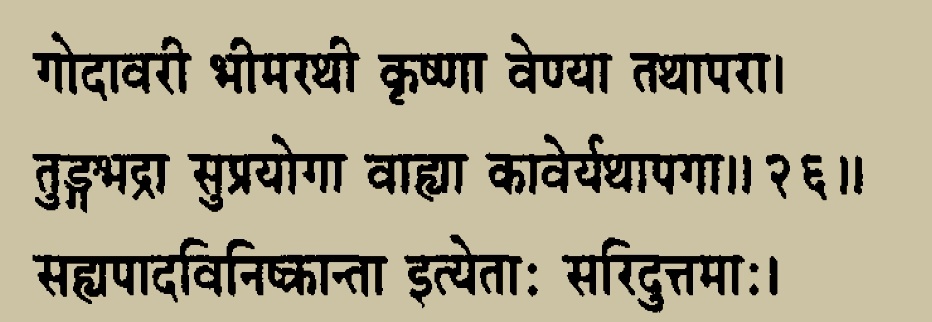The greatness of Tulasi has been reiterated in many of our Puranas since ages. The Padma purana especially has many references in praise & glory of Tulasi. We'll see what they are in this post.
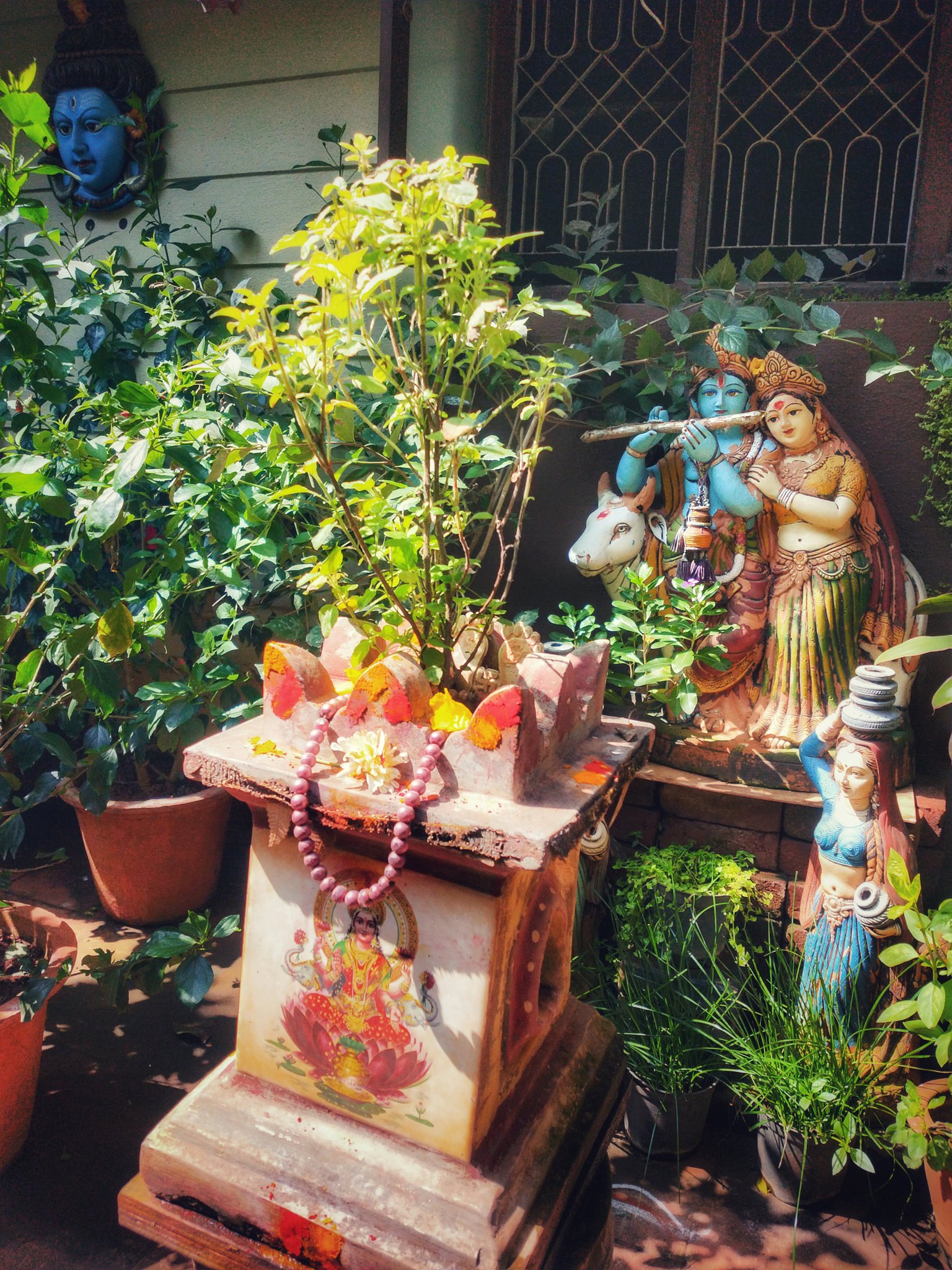 |
| Tulasi at our home |
Tulasi praised in the Padmapuranam
The Srishti, Brahma, Uttara & Kriyayogaasara Khanda of the Padma purana praise Tulasi to the hilt. Time & again they reiterate on the benefits of having a Tulasi at home & performing puja to her. Above is an illustration from Brahma Khanda of the Padma Purana depicting Tulasi puja.
Rishi Suta says that the servants of Yama do NOT come a house where there is a grove of Tulasi. Those who plant the Tulsi do NOT ever see Yama. All the sin of those who plant the Tulasi, nourish it, attend upon it, look at it & touch it, perishes.
The best rivers like Ganga, the best (gods) Vishnu, Brahma and Shiva, along with deities and holy places like Pushkara, remain in a Tulasi leaf. A sinner who endowed with Tulasi leaves casts his life & goes to Vishnu’s abode.
Sin does not touch the body of the man who would wear the sandal like Tulasi wood. He goes to the highest position. He who though impure and of bad conduct wears beads made of Tulasi wood round his neck, goes due to his devotion to the abode of Vishnu.
Along with Tulasi, Dhatri (Amla) fruit is praised as very auspicious. The man on whose body is seen the beads made of Dhatri fruits or Tulasi, is a devotee of Vishnu. He who, puts round his neck the garland of Tulasi, would worship Vishnu, obtains for each flower, plenty of cows.
A man should worship Vishnu in a Tulasi grove & at the root of a Dhatri in Kaartika maasa. He certainly goes to Vishnu’s world by doing so. If a sinner devoutly holds on his head the water remaining at the root of Tulasi, he goes to Vishnu’s abode.
He who would hold on his head the water flowing from a Tulasi leaf, has bathed (i.e. has obtained the fruit of having bathed) at all sacred places, and in the end he goes to the abode of Maha Vishnu.
References
Padma Puranam










